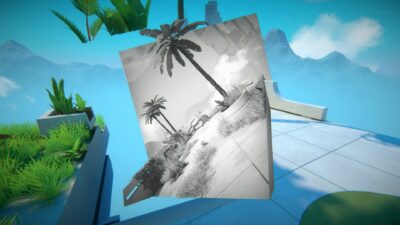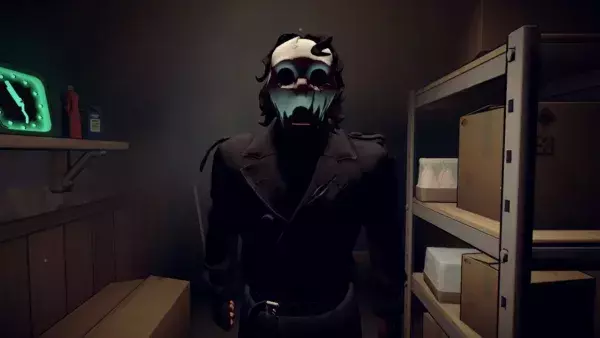
A map covered in dots and an inventory full of slightly daunting research utensils is your first introduction to In Other Waters. Soon, things become clear – you’re the sentient AI of a diving suit, out in the oceans of Gliese 677Cc. Your task is to assist xenobiologist Ellery Vas, making her first foray into the depths of the alien planet. Ellery, however, is not the first visitor to Gliese 677Cc – she came to find her former colleague Minae Nomura, who suddenly broke off all contact during her own studies. Ellery wants to see what she saw – and hopefully bring Minae back home.
In Other Waters makes the journey the destination. At first, you don’t know where you are and only have a vague goal in finding anything Minae has left behind, but it’s the thrill of the undiscovered that makes you set off. As an AI, it’s your job to direct Ellery. You scan your surroundings and mark anything that appears on the map, such as waypoints and different ocean species you come across. If the path is clear, Ellery can move carefully onwards, a tiny dot in a make-believe ocean.
Just like in interactive fiction games or tabletop role-playing, make-believe is an important part of enjoying In Other Waters. Developer Gareth Damian Martin, aka Jump Over The Age, has crafted amazingly detailed descriptions of Ellery’s surroundings, and as a scientist, she takes note of everything she comes across in vivid detail. Through these rich descriptions and an effective soundscape, the different animals, plants, and even underwater fungi are a joy to imagine. For further study, you can also take samples using the suit’s sampling kit and log them back at base.

To come across a reef teeming with new lifeforms to be explored is the central pleasure of In Other Waters.
Soon, a soothing loop of diving, scanning, and sampling sets in, but the game has a way of gently directing you towards your goals using its limited waypoints. That’s how you end up finding Minae’s research notes and previous projects. Her findings lead to using your samples in interesting ways – for example, to overcome strong currents or to safely navigate acidic waters.
A few times, my task got away from me, mostly because descriptive text for a species and Ellery’s observations display at the same time, and since the map view while you’re navigating the ocean is a much smaller portion of the map you see at base, I occasionally found it difficult to pinpoint my own location and ended up going in circles. As fascinating as the research is, it can also be frustrating to uncover the plot – here, you keep asking questions with no answers. We learn precious little about Ellery or Minae, so even though the former’s personal logs make it clear she cares, I found it difficult to feel the same way. Creating a whole ocean teeming with life is no small feat, though, and it’s this aspect that kept me coming back to learn more.
Highlight
The UI of In Other Waters realistically depicts the feeling of working processes through shifting bars in displays and moving lines of code. The colour scheme is an important tool, since it says a lot with very little. Depending on your conditions –if you dive into a cave, for example – the colours on screen subtly change.
Verdict
A game of many small mysteries. Perfect if you love the feeling of discovery.
74%
Genre: UI adventure | Format: Switch (tested) / PC | Developer: Jump Over The Age | Publisher: Fellow Traveller | Price: £12 | Release: Out now





